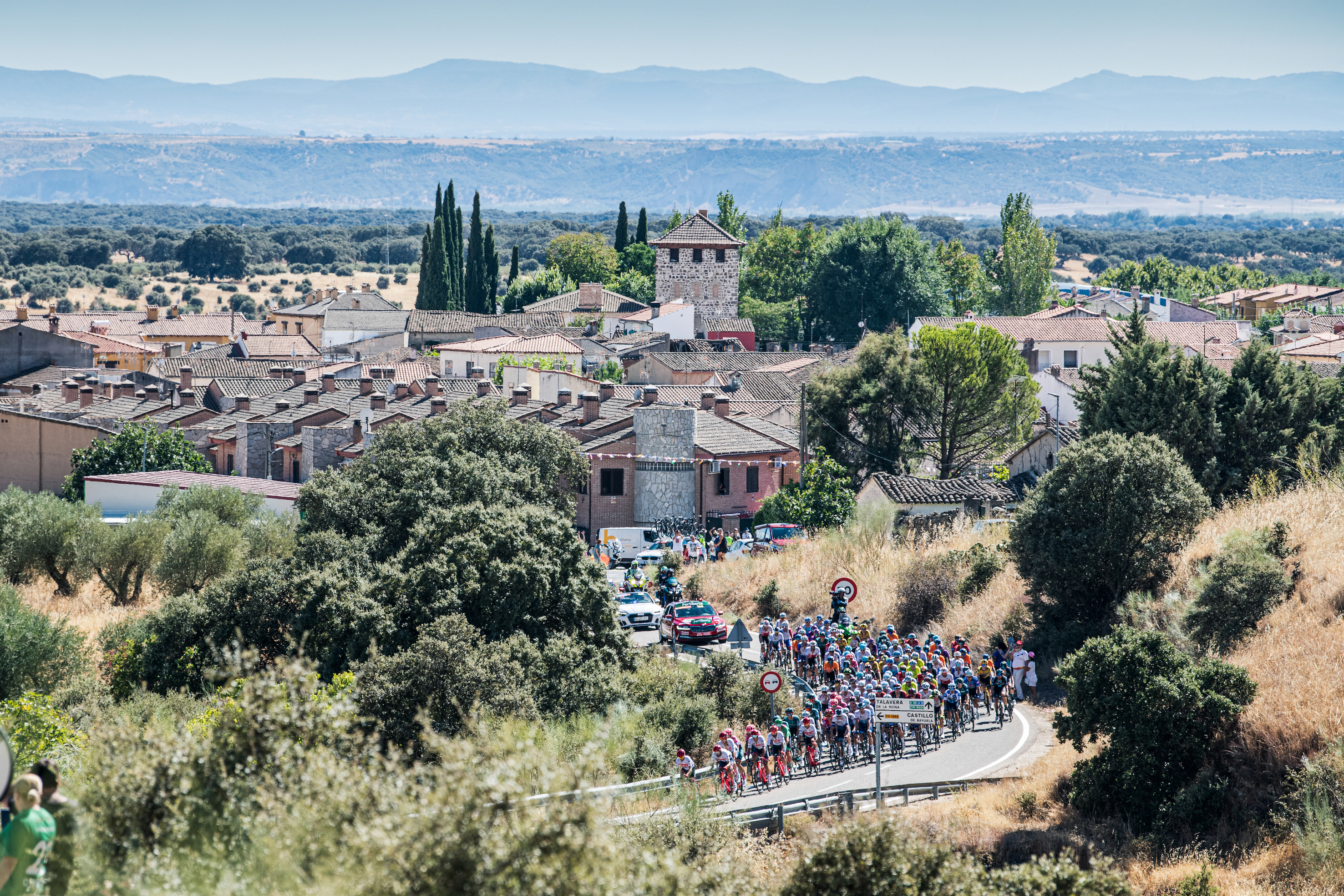
The Vuelta a España 2023 route is a traditional affair for the Spanish grand tour: featuring mountain after mountain, it's suited to a climber who excels on steep, punchy slopes.
Over 21 stages, the riders - some of whom have already been named within the ever-growing Vuelta a España 2023 start list - will be treated to nine summit finishes: stage 13's Col du Tourmalet finale promises to be a spectacle – and only one individual race against the clock, as well as one team time trial.
This isn't going to be a race for the sprinters; those after a fast finish will have their chance on just three occasions: stage seven (Utiel to Oliva), stage 12 (Ólvega to Zaragoza) and stage 19 (La Bañeza to Íscar).
We've broken the race down into stages, here's all the detail you need to know.
Vuelta a España 2023 route
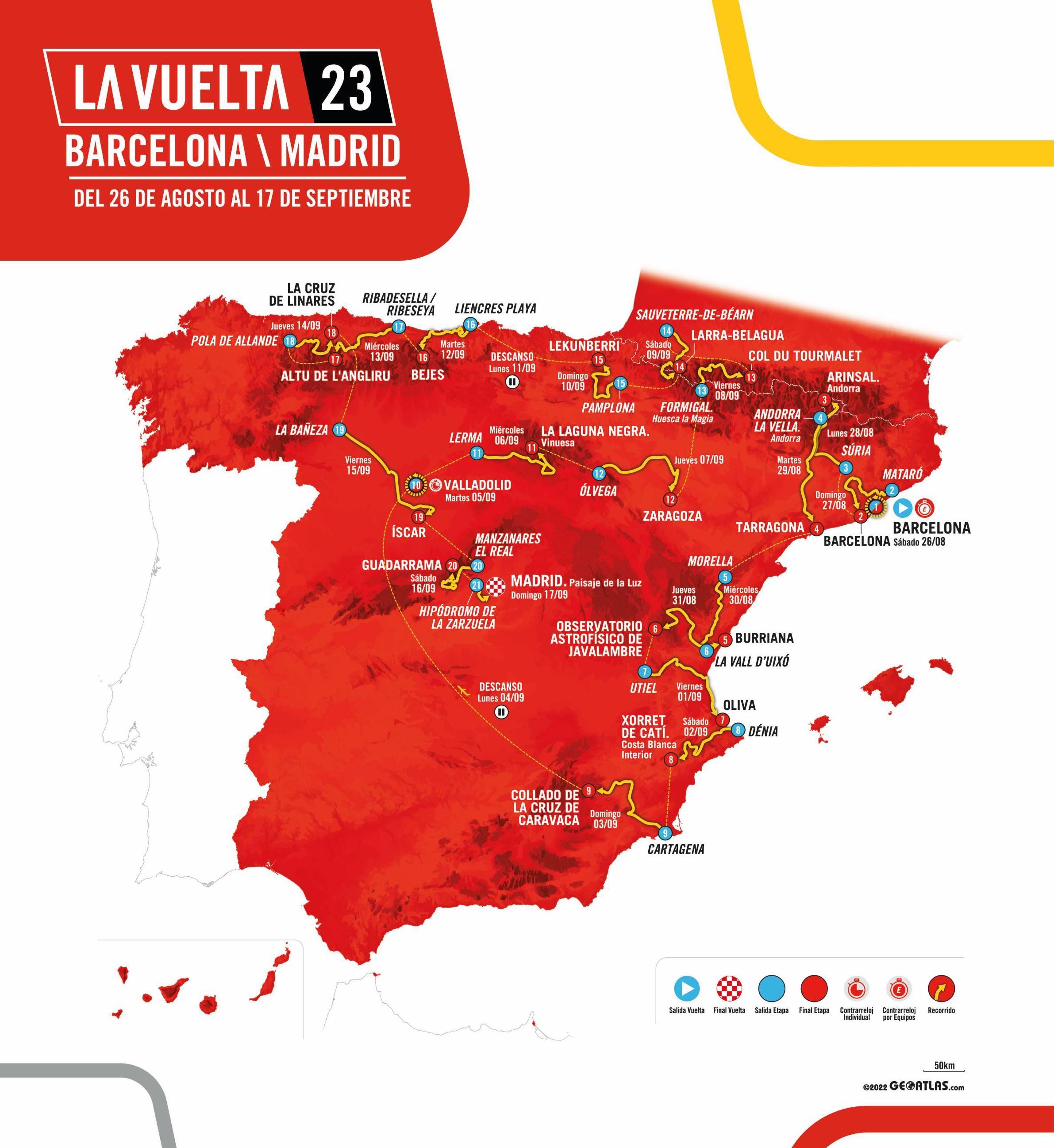
Vuelta a España 2023 stages
Stage one - Barcelona to Barcelona (14.8km TTT)
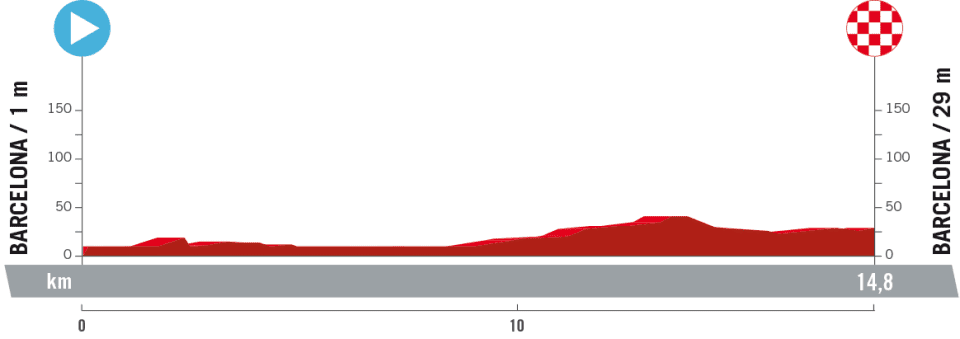
The Vuelta throws the GC into play from the off with a team time trial, just as it did last year in Utrecht in the Netherlands. The riders take on a route full of landmark sights and 90-degree turns and little flat to speak of. Time gaps are likely to be minimal at the end of what is essentially a city-centre sprint from corner to corner.
Stage two - Mataró to Barcelona (182km)
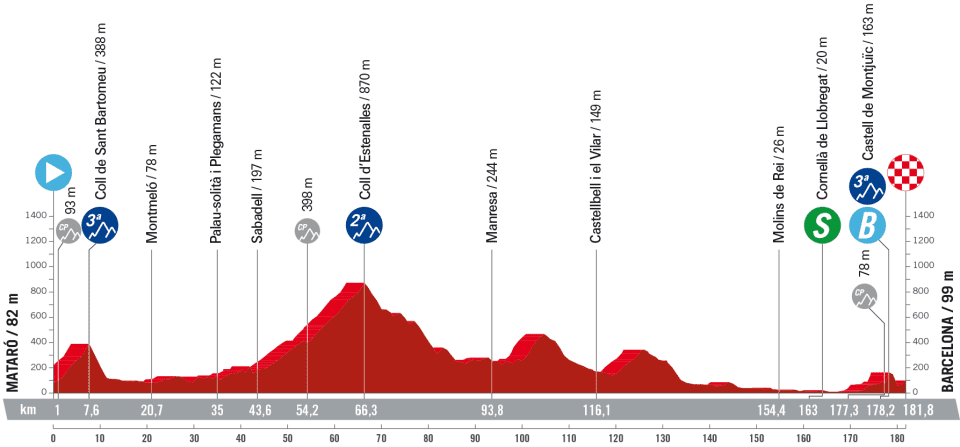
With only one stage under their wheels, the riders already need to steel themselves for some serious climbing on this hilly outing in the Barcelona region.
The day's main dish is the second-category Coll D'Estenalles, which sees riders climb from not far off sea level to 870m. It comes at around one-third distance, and while the remaining 115km are only moderately lumpy, the steep climb of Montjuic in the finale is likely to disrupt the intentions of the pure sprinters.
Stage three - Súria to Arinsal (Andorra) (158.5km)

The profile says it all: the Vuelta has hit the mountains – and it's only stage three. Heading north from Súria for a Pyrenean finish in Andorra, the first two thirds of what is not a long stage are only an appetiser for what is to come – a double-header of category-one beasts at the end, both finishing just below 2,000 metres.
Today is where the first major GC blows could be dealt, and just to liven things up even more, there are bonus seconds available on the first big climb, the Coll d'Ordino.
Stage four - Andorra la Vella to Tarragona (185km)
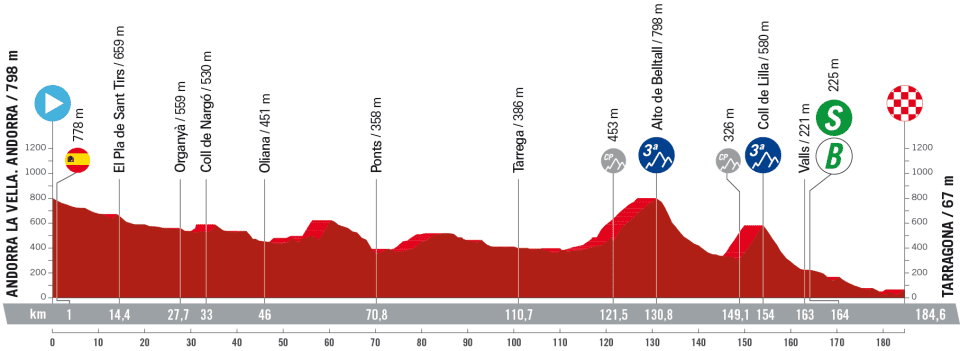
That Barcelona time trial aside, this is by far the flattest day so far, and must mark the first opportunity for the sprinters. They don't have it all their own way though, and will have to negotiate a pair of cat-three climbs in the final third.
This particular piece of cycling chess means teams will have to not only keep their designated sprinter in touch with the bunch but also field any breakaway attempts as the finish approaches.
Stage five - Morella to Burriana (186.5km)
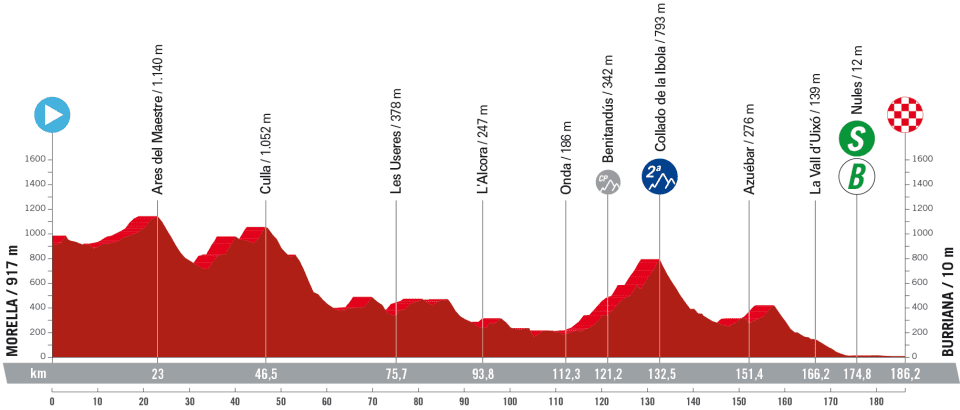
Another very hilly day out, but nevertheless one that the sprinters will be eyeing keenly. The day's major challenge is the second-category Collada de la Ibola, which comes around two-thirds of the way through, leaving plenty of time for the sprinters to regroup. Of course, the Ibola is also well placed for a strong breakaway group, so we could see quite the battle as the race ploughs eastward towards the orange groves of Burriana.
Stage six - La Vall d'Uixó to Pico del Buitre (183.5km)

From coast to almost inevitably mountainous interior, the riders battle their way gradually upwards today, for a finish atop the 1,956m Pico del Buitre – home to the Observatorio Astrofísico de Javalambre. However, if the riders are seeing stars when they get there, it's likely to be more due to the effort involved rather than anything to do with astronomy.
A 10.9km, category-one climb whose 8% averages belies the 15-16% ramps found all the way along its length, the Pico del Buitre is bound to ignite sparks in the GC race.
Stage seven - Utiel to Oliva (201km)

The most cut-and-dried opportunity for the sprinters the race has seen so far. In reverse to yesterday's hard-climbing stage, today heads downhill from vineyard-blanketed hills inland to the coastal flats, following the sea south from 80km from Valencia to Oliva. The route doesn't sneak above 15 metres' altitude all the way along this stretch, so the fastmen will be confident of having their day.
Stage eight - Dénia to Xorret de Catí (165km)

As the riders continue to surf 'n' turf along the Costa Blanca on Spain's eastern flank, they face another relentless day of ups and downs, culminating in a category-one climb of Xorret de Catí before a short descent to the finish.
Starting in the popular training camp destination of Dénia on the coast, they head inland where they find, in short order, four categorised climbs ushering them towards the day's climax at Xorret de Catí. A nasty piece of work this final climb is too, with ramps in excess of 20% and large stretches of gradient in the mid-teens.
A 4km descent delivers the riders to the finish.
Stage nine - Cartagena to Collado de la Cruz de Caravaca (184.5km)
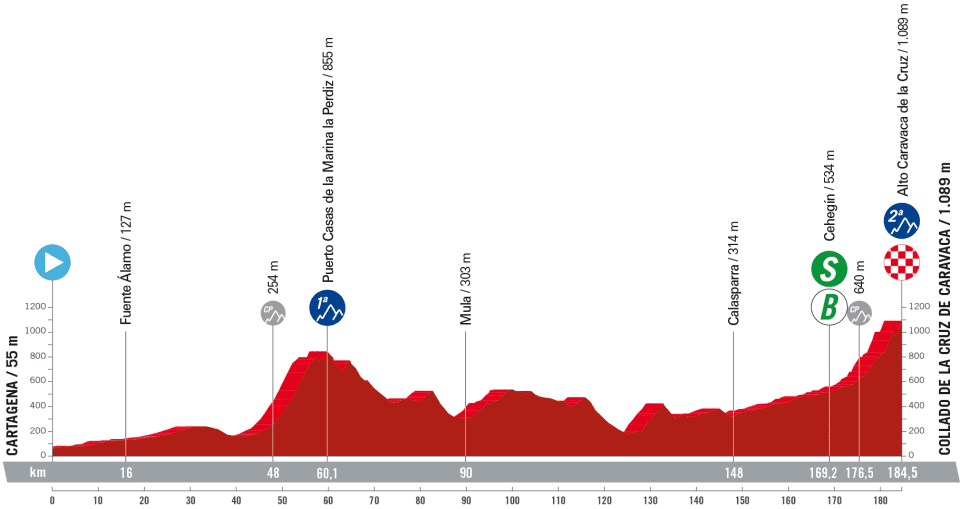
With the cat-one Puerto Cassis de la Marina la Perdiz coming at the third-way mark and a second-category summit finish, the GC riders and their teams might decide discretion is the better part of valour today and let the breakaways have their head.
This is the final coast-to-mountains stage on the Costa Blanca before tomorrow's rest day and a huge transfer that splits the country in two, taking the race almost to the north-west for the time trial.
Stage 10 - Valladolid ITT (25.8km)

Just as it was last year, the only ITT of the race is found on stage 10 and comes directly after a rest day. It takes place around Valladolid, which hosted the first ever Vuelta finish line in 1935, and has featured 34 times since, including eight time trials.
Largely flat and untechnical, the route is one for the specialists, though the GC men will need to be on their game too.
Stage 11 - Lerma to La Laguna Negra (Vinuesa) (163.5km)

Those fiendish Vuelta route designers have teased the sprinters with 150km of nigh-on flat going (difficult enough to find at all in Spain) before chucking in an enormous climb at the last and ruining all their plans.
The 6.5km long climb to the mountain lake of La Laguna Negra averages 6.8% and is possibly not hard enough for a full-on GC fight. But if a break can get established it could make for a thrilling battle between the remaining escapees.
Stage 12 - Ólvega to Zaragoza (151km)
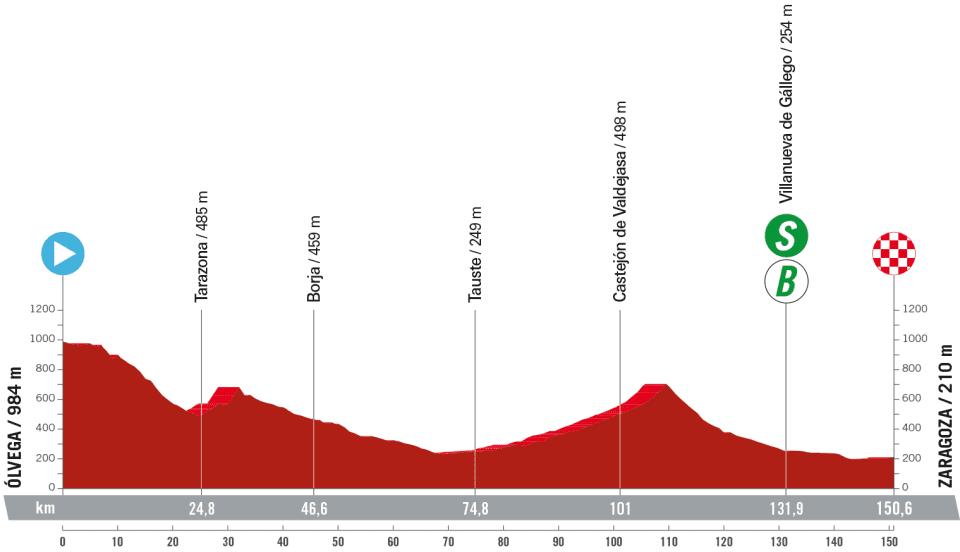
Any sprinters smarting at being thwarted by yesterday's climb to the finish will cheer up when they see the profile of stage 12. It might not look entirely flat but without a categorised climb in sight a sprint finish would seem be on the cards.
The riders will be watching out for crosswinds and echelons though, which are a common feature of any Vuelta trip to Zaragoza.
Stage 13 - Formigal to Col du Tourmalet (135km)
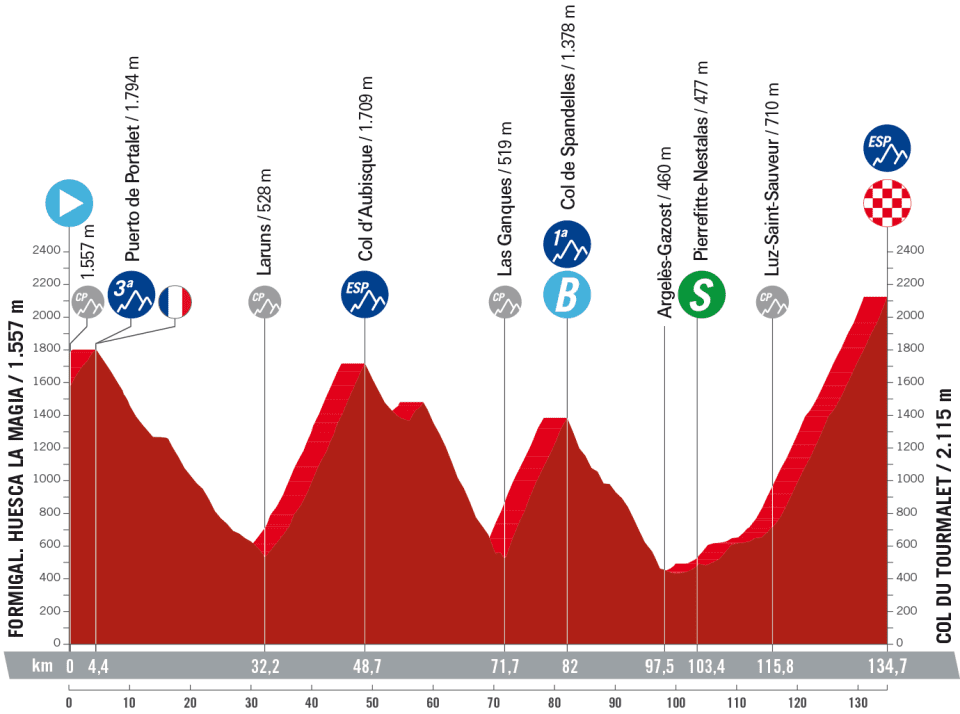
The hardest stage on the race takes riders across the border into the French Pyrenees on the way to the most iconic finish on the race – the Col du Tourmalet.
The profile looks savage – there's no other way to describe it. A dinosaur's mouthful of craggy peaks and troughs that begin from the get go.
The riders head straight into the cat-three Puerto de Portalet, which takes them above 1,700m and into France. Then it's all the way down to 500m before taking on the 'Especial'-rated (the equivalent to hors-cat in the Tour de France, or 'beyond category' – that's how hard they are) Col d'Aubisque, the cat-one Col de Spandelles, and then a finish on the Col du Tourmalet. Brutal.
Stage 14 - Sauveterre de Béarn to Larra Belagua (156.5km)

Another extremely challenging stage in the high mountains. After all, the riders found themselves slap-bang in the middle of the Pyrenees yesterday evening, so they had to get back to Spain somehow, right?
They are at least granted 40km or so flattish kilometres before the fun starts with the first of two ESP (Especial) climbs, the 1,440m Col Hourcère. Immediately afterwards comes the Puerto de Larrau which takes them to 1,579m and back across the border, offering bonus seconds to boot.
After the descent there's just the small matter of the cat-three Puerto de Laza before the climb to the summit finish of the Puerto Belagua begins.
Stage 15 - Pamplona to Lekunberri (158.5km)
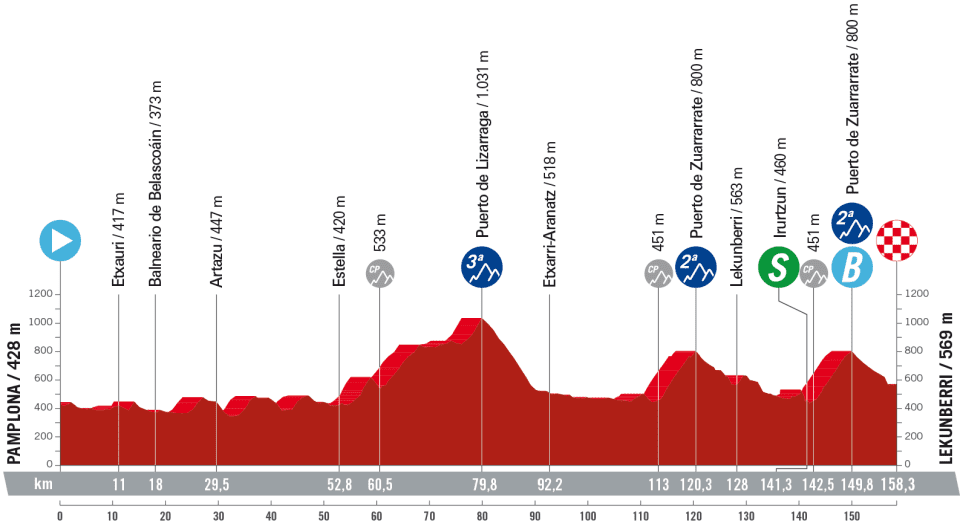
As the race sidles westwards away from the Pyrenees, it offers up a classic Grand Tour hilly stage. It is peppered with second and third-category climbs that should make it the perfect hunting ground for the breakaways while still keeping the GC riders on their toes.
All three classified climbs come in the second half, kicking off with a cat-three, followed by a brace of cat-twos, the last of which is less than 10km from the finish – the perfect springboard for a winning attack.
Stage 16 - Liencres Playa to Bejes (120.5km)
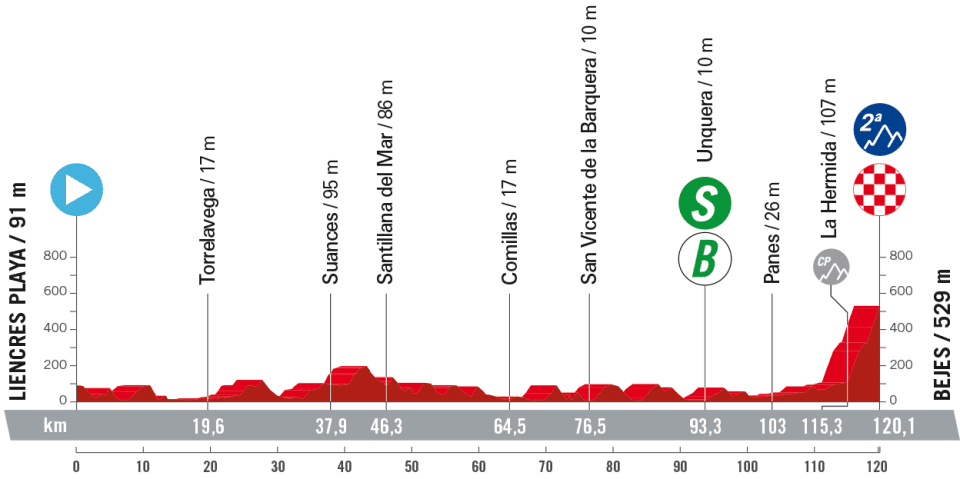
Straight off the back of a rest day, many riders will be gladdened by stage 16's short and mostly flat parcours. The finish climb to Bejes is only small, but numerous 15% ramps mean it should be steep enough that the strongest riders will make the difference on their way to victory.
Stage 17 - Ribadella / Ribeseya to Alto de L'Angliru

While the Col du Tourmalet may be the best known climb in this year's Vuelta, the Alto de L'Angliru is likely to strike the most fear into the hearts of the riders.
It comes after two cat-ones that will have already softened up the legs, and it is very, very steep.
The latter two-thirds of this 12.4km long climb are the ones to concentrate on. They rise upwards in a relentless, vertiginous wall, averaging between 12-14% with frequent stretches above 20%, all the way to the finish.
The GC riders will be steeling themselves for this one – anyone with sub-par legs here could lose minutes and minutes in those final eight kilometres.
Stage 18 - Pola de Allande to La Cruz de Linares (179km)
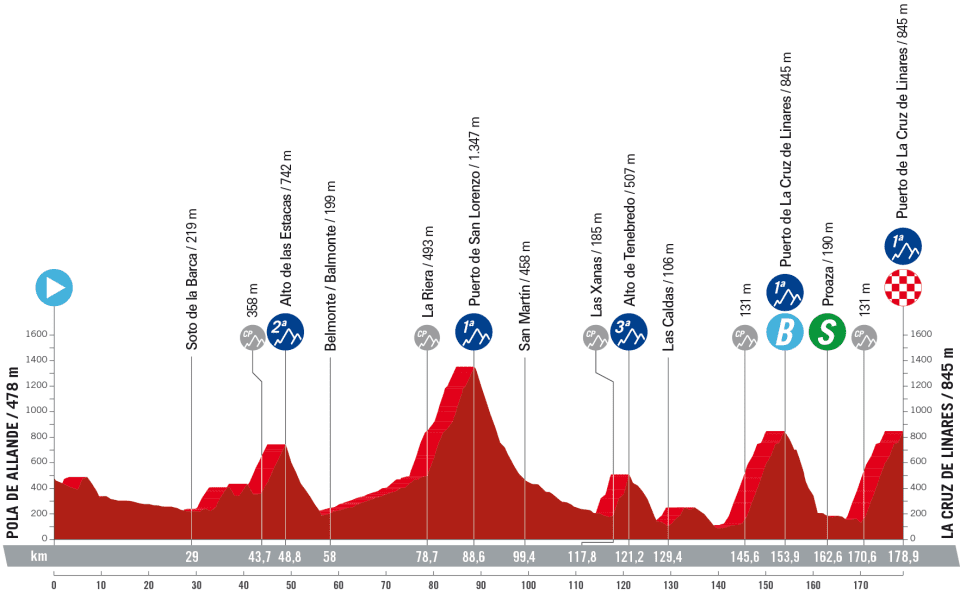
After yesterday's experience on the Angliru there will be some very tired legs, but equally plenty of strengthened resolve. After all, if you can get up the Angliru without cracking, you can get up most things. Riders will also be buoyed by the fact that this is the final big-mountain day.
Make no mistake though, this Asturian escapade is a beast, featuring two category-one climbs (one which is tackled twice), plus a cat-two and a cat-three for good measure.
The climbing starts 43km in with the second-category Alto de las Estacas, followed by the first cat-one, the Puerto de San Lorenzo mid-stage. After dispatching the third-cat Alto de Tenebredo the riders move swiftly on to a double ascent of the Cruz de Linares. Averaging around 10 per cent for the first half, it softens just a touch towards the top. But at this stage in the race, the legs are tired and unpredictable, and there will be some major sighs of relief among those making it to the finish without shedding crucial GC time.
Stage 19 - La Bañeza to Íscar (177.5km)
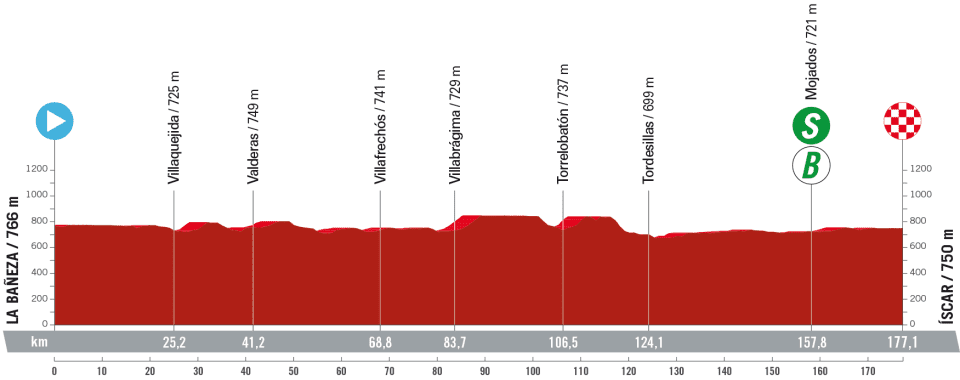
Anyone who wanted a sprint stage will be satisfied that they've definitely got one on their hands here. One of a pair of stages that look nailed on for a bunch finish in the final three days, this is as flat as they come, starting at 766m above sea level, finishing at 750m above it, and barely wavering along its 177.5km length.
Stage 20 - Manzanares El Real to Guadarrama
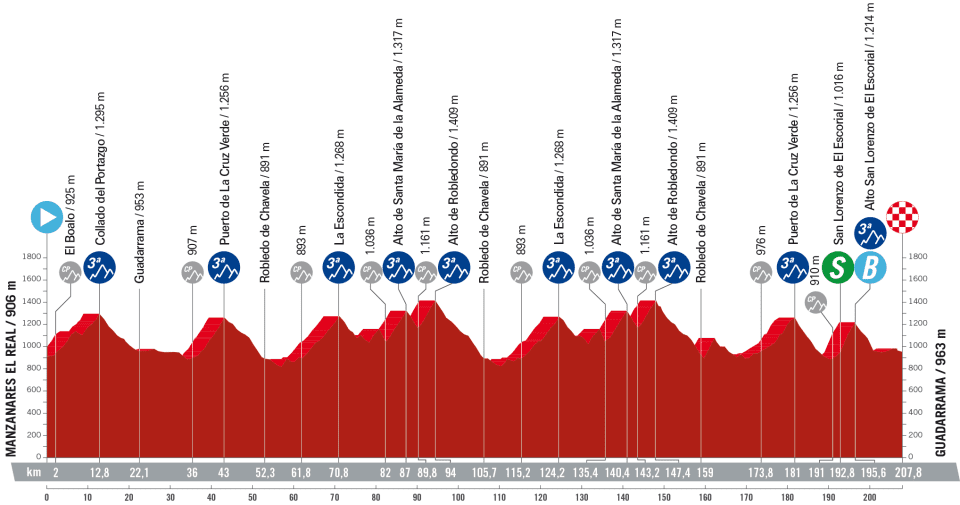
Not only is stage 20 is the longest stage of the race at 208km, it has the most hills in it too. They might all be third-category, but there are 10 – count 'em – 10 of them, spread across the length of the stage. A tough proposition for what will be universally tired legs at this point.
The route meanders and loops around north-west of Madrid like a Vuelta-style Tour of Flanders, taking in some climbs twice. Perfect breakaway territory.
Stage 21 - Hipódromo de la Zarzuela to Madrid (101.5km)
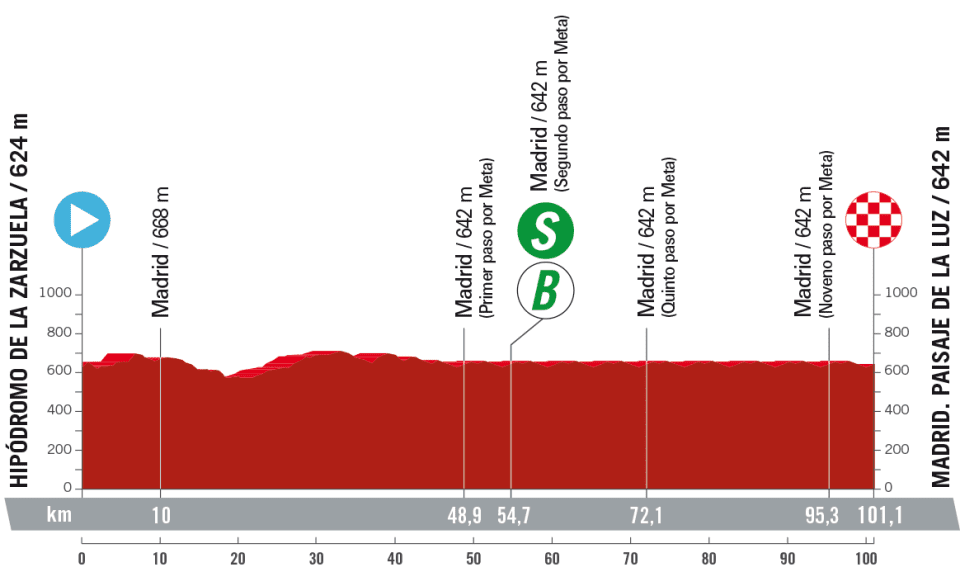
After yesterday's madness comes something more straightforward, and certainly more familiar. The day after the longest road stage, the riders are treated to the shortest, and with the GC theoretically wrapped up, there should be an atmostphere of fiesta for much of it.
The race loops south around the capital's suburbs from the north-west to the east before making a bee-line for the centre, where the spoils are mostly likely to be enjoyed by the sprinters.







